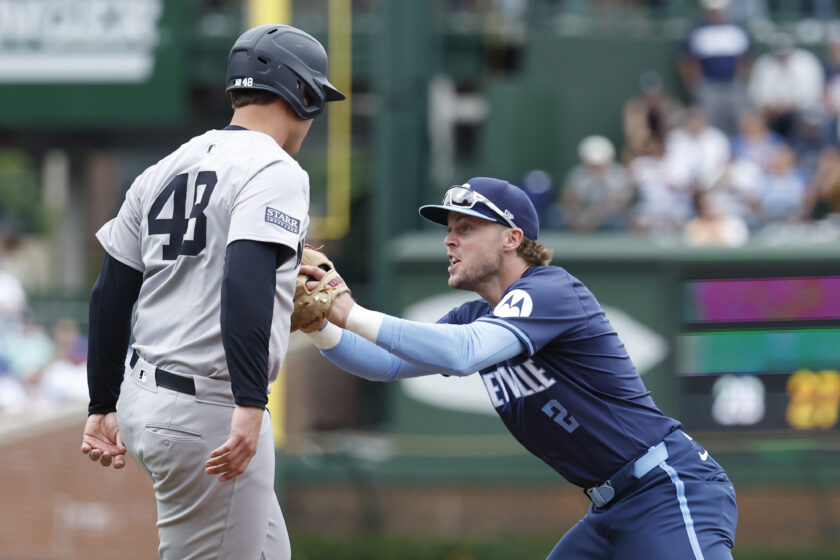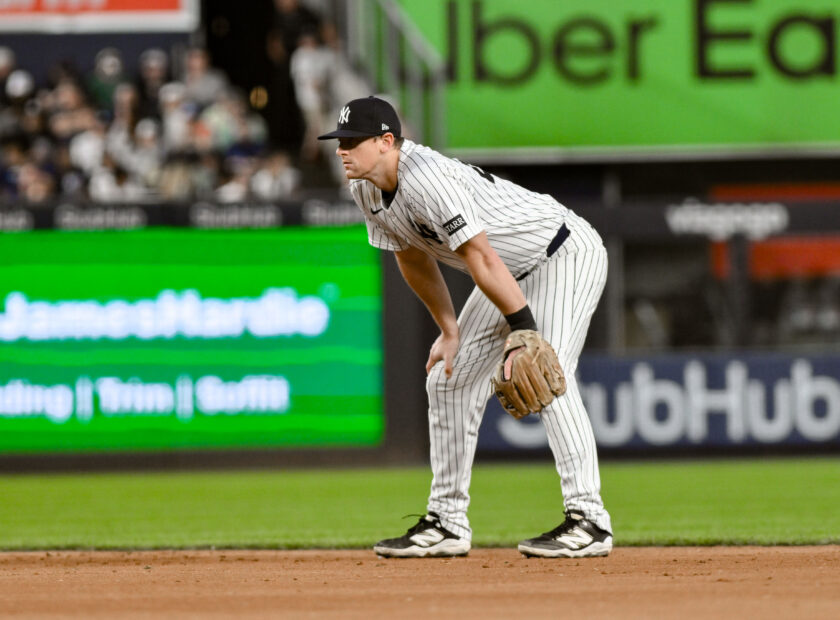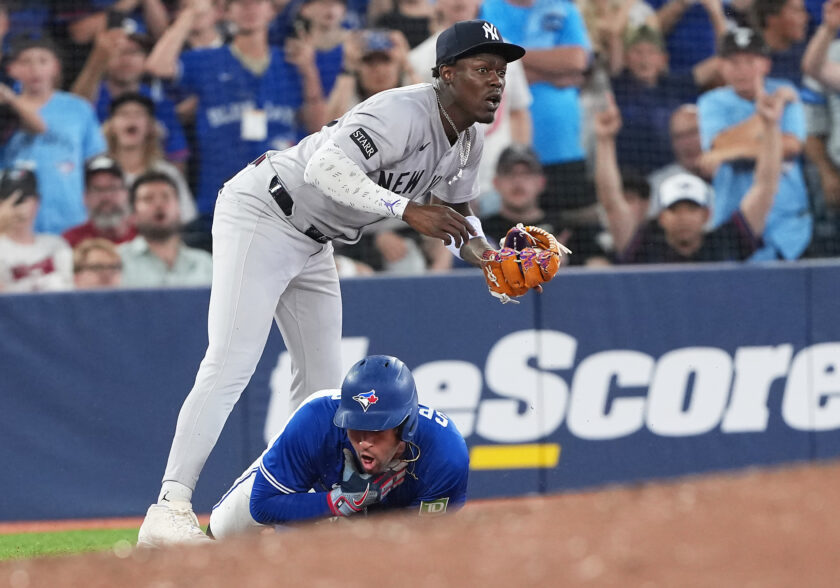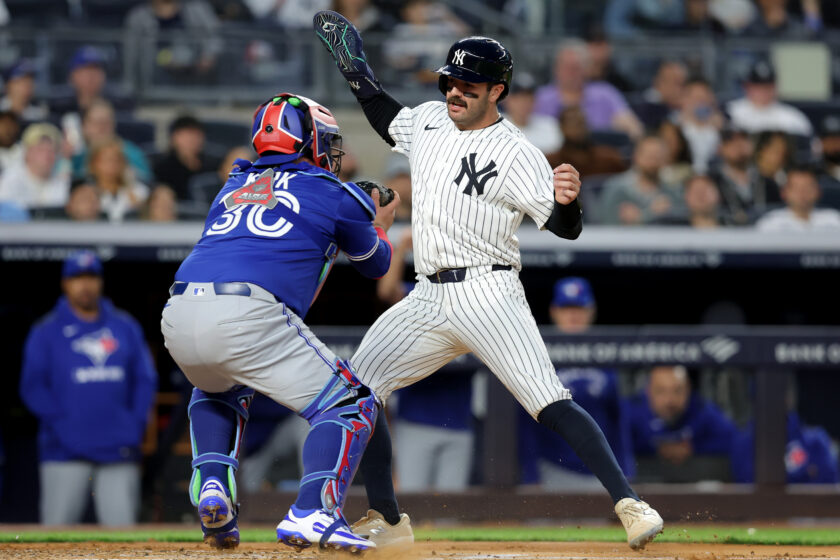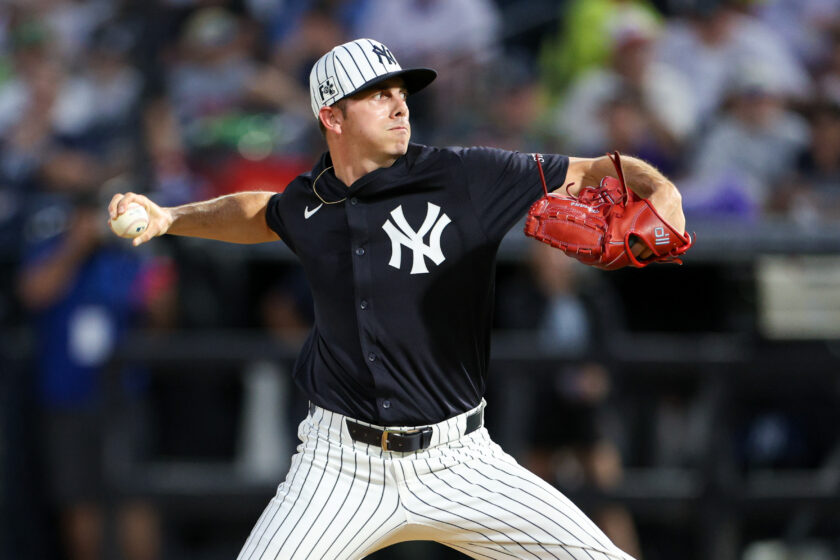New York Yankees: Starlin Castro’s One Detrimental Flaw

Starlin Castro has been a formidable acquisition for the New York Yankees, but one gaping hole in his game has been harmful to his transition.
[sc name=”Emmanuel Berbari” ]Right from the get-go, Starlin Castro seemed to be the ideal guy at second base for the New York Yankees. With that came expectations that reached all sorts of brilliant heights.The 26-year-old had an outstanding month of April, slashing .305/.345/.488 with a trio of homers and 12 runs batted in. At that point, hopes were high that a transition to the American League meant renewed superstar status for the previous sophomore sensation of the Chicago Cubs.
While Castro still remains productive and picks up timely hits, a lone factor has contributed to a drastic decrease in numbers.
Since the promising start, he has hit a mere .229 over a span of 44 games. In addition, 15 RBIs combined between May and June only slightly outweigh his mark for the entire first month of the season.
The factor that hurt Castro through his torrent start and is coming back to bite him now is an inability to hit the breaking pitch. In particular, the slider down and away has resulted in numerous weak waves from the second baseman.
Anyone who has paid witness to his early tenure in the Bronx tends to realize that a guy in his fifth year in the league continues to feast off mistakes with pitches of increased velocity.
Castro has a secret love for the sinker, or not so secret for that matter. When pitchers who live low in the strike zone make any sort of mistake in his wheelhouse, he hits it hard somewhere.
According to Brooks Baseball, the first-year American Leaguer has enjoyed a .364 clip off the sinking fastball and has raked his way to a .591 slugging percentage off that very pitch.
Moreover, when a cutter is hurled up there he slugs .548 and hits a stellar .323. He also has went deep twice off the pitch thus far in 2016.
He even has a tendency to wait on the next slowest pitch in a repertoire — the changeup. Castro possesses a .375 batting average against the change and a .409 BABIP, meaning that when he makes contact he hits that pitch hard and, therefore, finds holes.
However, any pitch that has sweeping movement left to right with a large variance in velocity, Castro cannot wait on and falters accordingly. He has only managed a lowly .185 output off the slider, fanning 10 times en route to a .265 slugging.
SEE ALSO: Yankees Cap Off Disappointing Road Trip With Loss In Series Finale (Highlights)
The curveball has not proven any more kind. A dreadful .133 clip with a mere two extra-base hits off the curve have highlighted woeful experiences at the dish.
It has been an awfully simple formula for the men on the mound that have to deal with Castro. Get ahead, and then finish. If any combination of hard stuff gets the youngster down in the count and leaves the pitcher unscathed, immediately in the drivers seat is the man standing on the rubber.
As a reward for not getting hammered, the pitcher can then bury Castro down and away without a doubt crossing their mind.
This directly explains his splits against right-handers as opposed to left-handers. Righties have the ability to feature the slider down and outside the zone and, in turn, Castro has struggled to much more an extent against them.
They can also provide for deception and throw across their body in order to fool a hitter who has a lot of moving parts in his stance.
Left-handers do not have that ability whatsoever. Castro is able to pick up the ball far better out of their hand, they feature no such pitch, and the splits represent the damage he has done.
He has hit .241 against righties as opposed to .275 against lefties. When facing southpaws, his slugging percentage is also an additional 73 points higher at .463.
The most important split, however, involves his strikeouts. Castro has struck out slightly more than double the amount of times against right-handed pitching. A flaw in his game that has resulted in his hyperactivity at the plate has remained present throughout the duration of the season.
Perhaps the transitional struggles have to do with protection in the lineup as well. When he hit .295 in the second half of last year with the Cubs, he did it batting fifth in a stacked lineup. He had all sorts of protection up and down the order making pitchers come directly at him. It was inevitable that he would get great pitches to hit.
[sc name=”Yankees Center” ]Now you see a bulk of Castro’s workload coming in front of Chase Headley or Didi Gregorius. This is no knock on Headley or the red-hot Didi, but pitchers are not necessarily scared of facing either one. With that sense of comfort comes a willingness to expand the zone and risk walking Castro, and most times it has been the opponent that has come out successful.
Plain and simple, it is an adjustment period placed solely on the Yankee second baseman to watch the tape, get together with the hitting coaches, and get his timing down.
This is a not an issue with the powerful and potent swing he possesses, yet a clear observation regarding a detrimental tendency he has developed. The same tendency that has led to him to periods of success will continue to hurt him in this lineup.
If Castro wants to produce from the bottom half of the order, the breaking pitch must become a friend rather than a foe. Making the slow stuff his ally will accelerate his status as a future star at the position.

